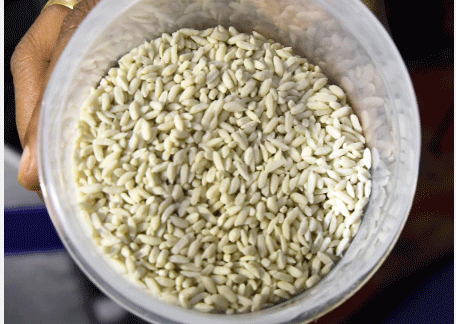In response to rising concerns regarding the safety of fortified rice, the Indian government has asserted that fortified rice is safe for consumption by everyone, including those suffering from hemoglobinopathies such as Thalassemia and Sickle Cell Anemia. The Centre emphasizes that its fortification initiative is based on scientific evidence and aligns with the guidelines set forth by the World Health Organization (WHO).
Addressing Safety Concerns
The Centre’s reassurance comes amid criticism that the approval for the universal supply of fortified rice caters to certain multinational companies rather than public health needs. In a statement, the Union Food Ministry clarified that the consumption of iron-fortified rice is supported by scientific evidence and is a globally recognized practice aimed at addressing widespread micronutrient deficiencies.
Earlier, fortified rice packaging was mandated to include health advisories for individuals with Thalassemia and Sickle Cell Anemia, as outlined in the Food Safety and Standards (Fortification of Foods) Regulations, 2018. However, a scientific committee questioned the necessity of such advisories, noting that no other country requires similar labels. The Ministry formed a working group to assess the safety of iron-fortified rice for individuals with hemoglobinopathies and concluded that current scientific evidence does not support any significant safety concerns.
Scientific Evidence and Iron Absorption
The Indian government’s assessment highlights that the iron intake from fortified rice is minimal compared to the iron absorbed during blood transfusions, particularly for Thalassemia patients. Moreover, the fortified rice is treated with chelation to manage any potential iron overload. Individuals with Sickle Cell Anemia are likely to absorb minimal excess iron due to elevated levels of hepcidin, a hormone that regulates iron absorption in the body.
The initiative to fortify rice began as a pilot program in 2019 and has since been scaled up through a structured three-phase plan. Under the Pradhan Mantri Garib Kalyan Anna Yojana (PMGKAY), the government aims to procure 520 lakh metric tonnes (LMT) of fortified rice annually.
Expanding Infrastructure for Fortification
India has seen significant growth in its rice fortification ecosystem. Currently, there are 1,023 fortified rice kernel manufacturers with an annual production capacity of 111 LMT, which far exceeds the requirements of the PMGKAY program. Additionally, 232 premix suppliers capable of producing 75 LMT per annum are in place, significantly surpassing the 0.104 LMT needed for fortification.
Of the 30,000 operational rice mills in the country, more than 21,000 have installed blending equipment, capable of producing 223 LMT of fortified rice per month. This expansion of infrastructure and capacity demonstrates the government’s commitment to ensuring a steady supply of fortified rice, making it an integral part of India’s nutritional strategy.
The Indian government’s push for fortified rice is a proactive step toward addressing micronutrient deficiencies and improving public health. By grounding its policies in scientific evidence and expanding infrastructure for production, the Centre aims to assure the public of the safety of fortified rice for all, including vulnerable populations. As fortified rice becomes a staple in India, it is poised to play a crucial role in enhancing the nutritional landscape of the nation.
Error





